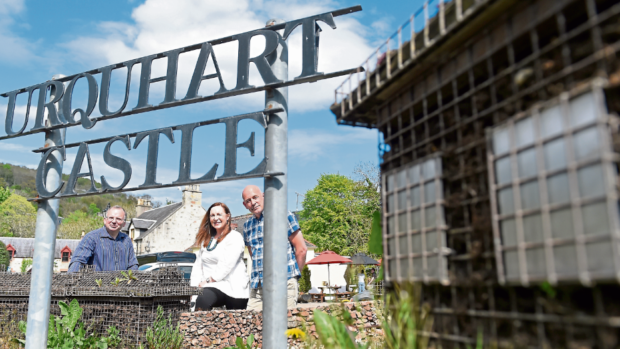Plans have been unveiled for a community buyout of iconic Urquhart Castle’s visitor centre – and it could pave the way for takeovers at other attractions across the north.
The Glenurquhart Rural Community Association (GURCA) has taken the first steps towards an asset transfer of the visitor centre, car park and land at the Loch Ness attraction, currently owned by Historic Environment Scotland (HES).
It is also bidding for a neighbouring tourist information centre, owned by the council and leased to VisitScotland, as well an area of parkland between Drumnadrochit and Lewiston.
Tourism chiefs said the buyout would allow the community to “control more of their destiny” and create the momentum for potential future buy-outs of sites such as Fort George.
Local residents have been invited to a meeting in Drumnadrochit next Tuesday to deliberate the proposals.
Local businessman Willie Cameron, spokesman for GURCA, said money generated from ticket sales could be used to repair crumbling local roads, facilities for young people, education bursaries and childcare facilities and to improved care facilities for older people.
He said: “The community is in a better position to run and identify what is required out of the proceeds of these assets. To my mind it’s a ‘no brainer.’”
The new plans, which could generate millions of pounds for the local economy, have emerged in the wake of the tiny island of Ulva being transferred to public ownership last week as part of a £4.5 million deal.
The latest figures show Urquhart Castle was visited by 487,000 people during the last financial year.
Mr Cameron added: “Why should many tourists and many people of the village suffer lack of amenities when there is a cash cow on our doorstep? We want to make a difference for the next generation of people and the elderly people living in our community.
“This could open the gates for other tourism areas that are requiring cash for infrastructure.”
Mr Cameron said that if locals are in favour, he believes raising funds would not be a problem given the prime location of the site.
Inverness Chamber of Commerce chief executive Stewart Nicol said an asset transfer would give the community the chance to “control more of their destiny.” He also stressed the need for a successful buyout in this case, to create a “positive momentum” which will encourage more future community buy-outs across the region.
He added: “I think future buy-outs may struggle when there is less of an obvious attraction, due to commercial challenges. The opportunities have to be carefully thought out but I would include Fort George as a potential opportunity.”
Glenurquhart Community Council vice chairman, David Fraser, said proposals are at an early stage but added: “It has the potential to transform the village going forward.”
A spokeswoman for HES said: “We were approached by the Glenurquhart Rural Community Association to discuss their broader plans for the area and have had two initial meetings, however there are no firm plans on the table.
“The group now intends to hold a public meeting to discuss these ideas further, as part of their wider plans under the community action plan, and we are continuing to hold dialogue with them.”
Asset transfer – how it works under the Act
Under the “asset transfer” section of the Community Empowerment Act (Scotland) 2015, which came into force in early 2017, communities can apply to transfer assets belonging to – or in some cases leased to – public bodies such as HES.
The Act itself states that community bodies have a right to make requests to all local authorities, Scottish ministers and public bodies for any land or buildings they feel they could make better use of.
HES’s policy and guidance on asset transfer criteria highlights five stages of progressing an asset transfer request.
The first of those is “development,” which involves the applicant identifying community needs, setting out the benefits of the project and testing the feasibility of the plans, then deciding on the purchase amount if seeking ownership.
The second stage is “submission,” which involves setting out all of the information needed as part of a request for the asset transfer.
The third stage involves “assessing” the evidence supplied for what benefits community use will bring, such as local jobs, increasing local educational benefits or improving health, social or environmental wellbeing.
Evidence will also be sought on how the project will bring in enough income to cover running costs, and about how the project will be managed in the long term based on the skills, experience and qualifications offered by those involved.
A decision will be made within six months of the asset transfer request being validated – and any appeal can be made within 20 working days.
If the asset transfer request is successful, a legal agreement will be drawn up in order to make a formal offer. The asset transfer will normally be concluded within six months.










